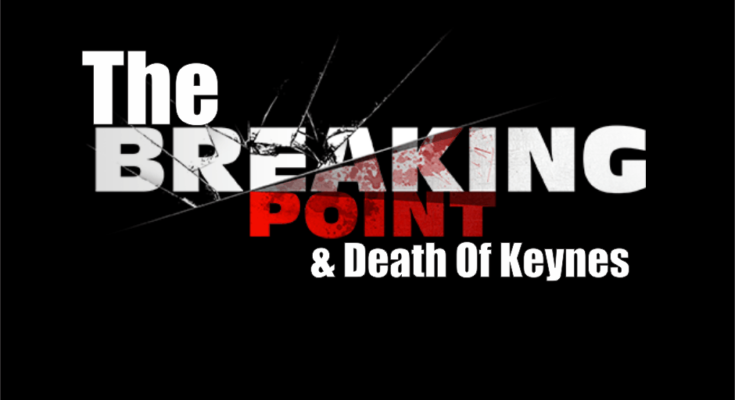
You can almost hear the announcer for the movie trailer;
“In a world stricken by financial crisis, a country plagued by spiraling deficits and cities on the verge of collapse – a war is being waged; gauntlet’s thrown down and at the heart of it all; two dead white guys battling over the fate of the economy.â€
While I am not so sure it would actually make a great movie to watch – it is the ongoing saga we will continue to witness unfold over the next decade. While the video below is entertaining, it does lay out the key differences between Keynesian and Austrian economic theories.
Just last week, the Federal Reserve released a report which forms the basis of the semi-annual testimony Ms. Yellen will give to Congress this week. There was much in this report which suggests the models the Federal Reserve continues to use are at best flawed and, at worst, broken.
For decades, ivory tower economists have heaped high praise on Keynesian policies as they have encouraged Governments to drive deeper into debt with the expectation of reviving economic growth.
The problem is – it hasn’t worked.
Here’s proof. Following the financial crisis, the Government and the Federal Reserve decided it was prudent to inject more than $33 Trillion in debt-laden injections into the economy believing such would stimulate an economic resurgence. Here is a listing of all the programs.
(Click on image to enlarge)

Unfortunately, the results have been disappointing at best, considering it took almost $17 Billion for every $1 of cumulative economic growth.
(Click on image to enlarge)

Keynes contended that “a general glut would occur when aggregate demand for goods was insufficient, leading to an economic downturn resulting in losses of potential output due to unnecessarily high unemployment, which results from the defensive (or reactive) decisions of the producers.â€Â  In other words, when there is a lack of demand from consumers due to high unemployment then the contraction in demand would, therefore, force producers to take defensive, or react, actions to reduce output.
In such a situation, Keynesian economics states that government policies could be used to increase aggregate demand, thus increasing economic activity and reducing unemployment and deflation. Investment by government injects income, which results in more spending in the general economy, which in turn stimulates more production and investment involving still more income and spending and so forth. The initial stimulation starts a cascade of events, whose total increase in economic activity is a multiple of the original investment.

